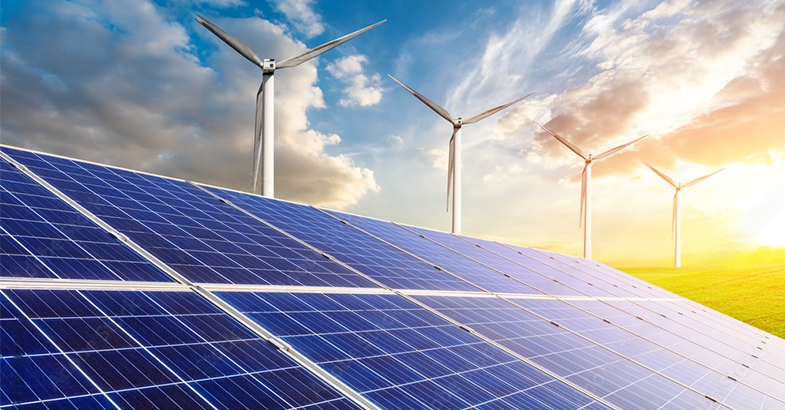
In the past, the world was beautiful, but humans took it for granted and caused damage by burning fossil fuels, cutting trees, and polluting. This led to changes like melting ice caps and rising sea levels, and animals suffering. In order to control the damage, some people realised their mistakes and started to recycle, conserve water, use renewable sources of energy, and clean up pollution. With time, the world started to heal, and animals began to thrive again. Now, people live in a beautiful world once more.
Are we following the story we want? We all want to solve climate change, but the current narrative of relying on technical solutions like solar panels and electric cars may not be the solution. Developing nations like India are rapidly adopting solar panels without considering the challenges faced by early adopters like Germany and USA. Solar rooftop electricity costs twice as much as solar farm electricity, and both require a significant amount of land and the latter requires long transmission lines to evacuate power, which can negatively impact wildlife and local communities. We are also working on technical solutions, with the significant challenge being the intermittent nature of solar and wind power. Proposed solutions included converting hydroelectric dams into massive batteries by pumping water uphill during peak generation times to be used later for electricity when needed.
Renewable Energy Challenges and the Nuclear Solution
Initially, wildlife concerns about renewable energy didn’t seem significant compared to other issues, such as house cats killing billions of birds each year. However, as time went by, these problems persisted and worsened. Due to geographic limitations and conversion expense, California, committed to renewable energy, has yet to convert many hydroelectric dams into batteries. Water scarcity and climate change also make it challenging to use water for energy storage rather than irrigation.
California has stopped solar farms from sending excess electricity to cities due to reliability concerns, and they pay neighbouring states to take it instead. Wind turbines threaten large bird species, unlike cats which mainly kill common birds. Building solar farms requires clearing wildlife habitats, leading to the relocation and deaths of desert tortoises, as seen with Ivanpah. Renewable energy has natural limitations and challenges with integrating unreliable power onto the grid, resulting in economic costs. Despite the decreasing cost of solar panels and wind turbines, California and Germany have seen significant price increases in electricity. In contrast, France, which relies on nuclear power, pays almost half as much for electricity as Germany while generating twice as much clean energy.
Nuclear power is much more reliable than renewable sources, generating power 24/7 for about 90% of the year. A global comparison of nuclear and solar power deployment over the last 40 years reveals that investing in nuclear energy could have provided Germany with 100% clean energy and transportation for the exact cost as renewables.
The Safety and Environmental Benefits of Nuclear Power
The safety and waste disposal concerns of nuclear energy are reasonable but scientific studies over 40 years have consistently found nuclear power to be the safest energy source. According to the WHO, about seven million people die annually from air pollution, which nuclear plants don’t emit, thus saving almost two million lives to date, according to climate scientist James Hansen.
What about the environmental impact of nuclear power? Uranium fuel is incredibly energy dense, with a small amount being able to power your entire life. Compared to a solar farm like Ivanpah, California’s last nuclear plant Diablo Canyon generates the same amount of electricity but takes up 450 times less land. Solar panels require 17 times more materials than nuclear plants, including all the fuel used. Nuclear waste is safely contained and internalised, with all the waste from the Swiss nuclear programme fitting into a single room. In contrast, other methods of generating electricity emit waste into the natural environment as pollution or material waste.
The Dilemma of Renewable Energy: Environmental Concerns and Beliefs
Solar panels are often considered environmentally friendly, but there is no plan for disposal at the end of their 20–25-years lifespan. Experts fear they will be shipped to poor countries, where they will be disassembled, exposing people to toxic elements like Lead and Cadmium. This raises the question of whether efforts to save the climate harm the environment. Historically, humans have moved towards more energy-dense fuels like coal, oil, natural gas, and uranium. This has allowed for improvements like forest regrowth and decreased air pollution. Poor countries are still transitioning away from wood and dung as their primary energy sources, a positive change.
Nuclear energy is clean and energy-dense but unpopular due to historical reasons. While all types of clean energy are believed to address climate change, reducing nuclear energy may be necessary to scale up solar and wind, like in France. However, nuclear plants are challenging to ramp up and down compared to natural gas, which can handle the variability of solar and wind. The shift to renewables like solar and wind in areas with primarily nuclear and hydro grids could increase carbon emissions. Oil and gas companies have invested in promoting solar and wind due to their understanding of these challenges. International events like the California natural gas leak and Germany’s coal mining project affecting Hambacher Forest show the challenges of phasing out nuclear energy for solar and wind. Despite this, there are positive developments, like the citizen’s jury in South Korea voting in favour of expanding nuclear energy and voters in Arizona rejecting a proposal to replace nuclear energy with natural gas and solar. Even the Netherlands announced an increase in reliance on nuclear energy due to the inability of solar and wind to meet climate targets alone.
As climate change became a pressing issue, many embraced idealistic solutions like using renewable energy to live harmoniously with nature. But with new information, we’re starting to question our beliefs. The dilemma is whether we’ll continue letting renewables harm the planet, knowing they can’t save it.
Author Bio:

Anil is an enthusiast in Energy Economics, Environment, & Policy. Currently working as the Principal, Yield and Service Delivery with Secure Meters Limited. He has been instrumental in shaping energy and power policies, collaborating with industry stakeholders, utilities, central ministries, and multilateral funding organisations to establish technology roadmaps and foster positive technological disruptions. He is a student of the Advanced Management Programme in Public Policy (AMPPP) Co’23 at ISB.

